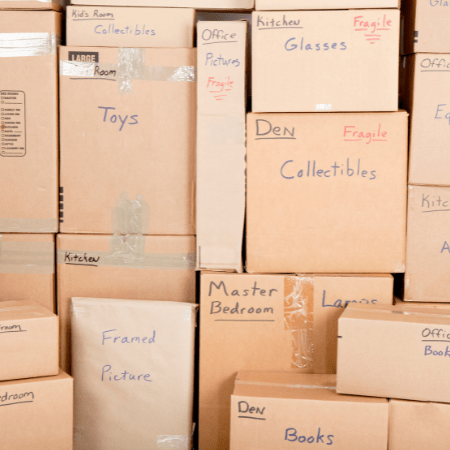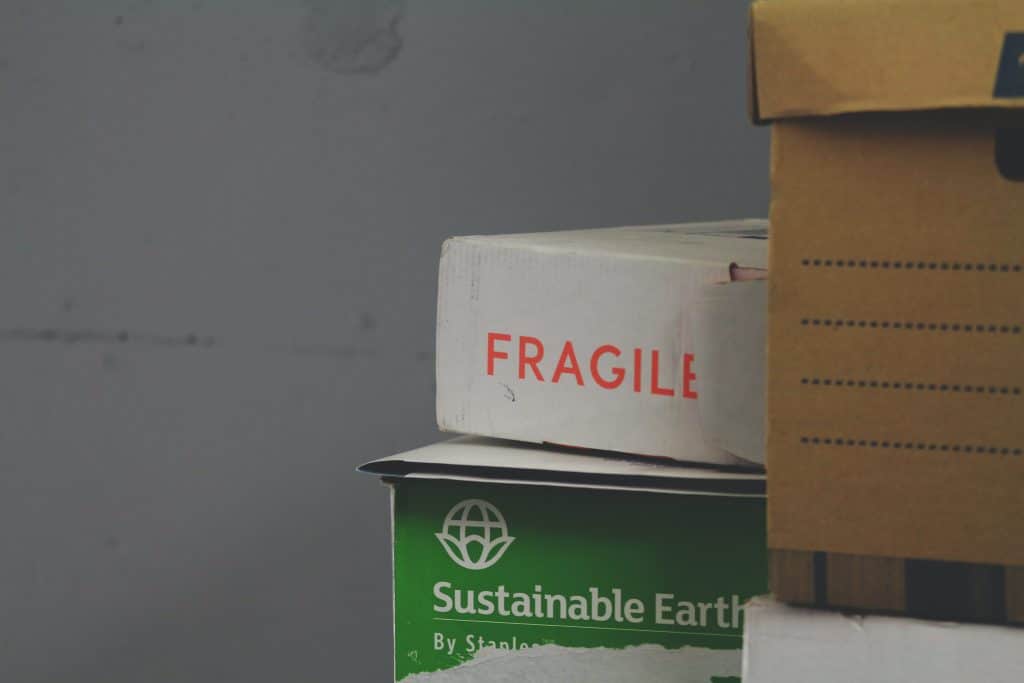How To Organize Your Storage Unit in 8 Steps

You just rented your storage unit, everything is packed up and good to go, but now the question looming over your head is, “how am I going to organize my storage unit?” Well, the hardest part is over, the first step! Your storage unit is ready and patiently waiting for you to fill it with all your belongings, collections and memories. Now you just have to pack it.
But, before you go putting things in there willy-nilly, take a second to make a plan for how to organize your storage unit. You’ll be grateful that you took the time to strategically organize your unit for easy access later on. You don’t want to be stuck rummaging through every single box in your storage unit to find that special carving knife for the Thanksgiving turkey, or those winter coats because there’s a random snowstorm you weren’t expecting. Avoid falling, and the hassle; follow these tips to pack your storage unit. Let’s get organized!
1. Label your boxes
First things first. One of the most important aspects of how to organize your storage unit is labeling your boxes. When you’re trying to find that one novel for book club, but don’t remember which boxes are “books” and which ones are “kitchen” it can cause undue stress! Avoid this rookie mistake by labeling every box. Make sure you label the top and at least one side of each box, including a box number, the room it came from, and everything that is inside. The more specific you can be, the better.
If you’ve already packed everything up, it can seem like a waste of time to unpack and repack boxes just to label them. But you’ll be grateful you took the time now, so you don’t have to ransack your unit to find an item later.

2. Create a master list
After you’ve labeled all of your boxes, create a master list. Although it may sound ominous, it will help in the long run. Write down the box number and all the contents of the box, and do it for each one in your storage unit. This way you’ll have a reference sheet for what items are where.
3. Map it out
A great tip to keep your storage unit organized is to map it out. Now, you don’t need an architecturally accurate map with exact dimensions (although you can if you want), but it’s best to have a general idea of where everything is in your storage unit. It can be a simple sketch dividing your unit into sections for each room. Pack all the kitchen boxes together, bedroom boxes, office boxes and so on. Even dedicating a corner of your unit to one room of belongings can help you later when you’re looking for a certain item or box.
4. Stack, stack, stack!
It may be obvious, but if you want to utilize your storage space to its fullest capacity, you need to use height. Did you know most storage units are 9 ft. high or taller? Now when you’re stacking items, be sure to put heavy, sturdy boxes or items on the bottom, and lighter or smaller boxes on top to prevent from unwanted toppling. You can also stack furniture, such as tables, top to top, to conserve space.
5. Put items you’ll need access to in the front
Anything you’ll need to get to often should be placed toward the front of your storage unit. That way, whenever you need those items, they’re easily accessible and you don’t have to rummage to the back of your unit to find them. These might include winter clothing, school or office documents or holiday decorations.
Before you start loading everything in your unit, you can even put a special note or use a different color to call attention to these boxes, so you remember to put them toward the front.
6. Create a center aisle
Your storage unit can easily become an un-navigable maze. Save yourself the pain and embarrassment of struggling to get to the back of your storage unit and make a center aisle. There will still be plenty of room for your items, and you can easily reach any boxes at the back of your storage rental.
7. Let them breathe
Now even if you have a climate-controlled storage unit, it’s still important to allow for air circulation. If possible, pack boxes on top of pallets so air can flow underneath those items. Also, consider leaving a small space between the walls of your unit and your items, to allow for ventilation.

8. Get snazzy, get shelving
You may not think it necessary to put shelving in your storage unit, but it can be helpful. Strategically stacking your items does utilize the height of your unit, but you may not want to stack items atop those extra fragile items like glassware or wedding china. Shelving helps make the most of your space and also gives you the peace of mind that your items won’t accidently fall and break.
Common FAQs
Q: What is the best way to pack a storage unit?
A: With a plan! The more thinking and organizing you do before you start packing your unit, the more helpful in the long run. Some key tips are to label your boxes, create a master list and map out your storage unit.
Q: How do I pack furniture in a storage unit?
A: Dissembling your furniture, like taking off the legs, may seem like a hassle, but doing so will increase the available space in your storage unit. If that’s not possible, stack tables and other furniture top to top. Try and pack your furniture off the floor by placing base items on a pallet or tarp. If you’re looking to store your furniture long-term, make sure you wrap it. It’s also great to store sensitive items like furniture in a climate-controlled storage unit that regulates temperature and mitigates damage from humidity.
Q: How do I organize a mini storage unit?
A: Making the most of your storage rental is especially important if you have limited space, like in a small or mini storage unit. Make sure you utilize all of your space by stacking items. Put the heaviest on the bottom, and the lighter, smaller boxes on the top. You can also use the space inside trashcans for items with longer handles like rakes, shovels and brooms.
Q: What should I not put in a storage unit?
A: Even though self-storage can be used for almost anything, there are a few items that you cannot store. Items that are flammable or toxic should not be stored. Weapons and ammunition, perishables and live plants should also not be kept in a storage unit. And, maybe the most obvious, but don’t store anything that’s alive (including animals and you!). Use your common sense when considering whether something should or shouldn’t be put in a storage unit. If you’re unsure if something can be stored, feel free to talk to any of our storage professionals to find out!
How to Organize Your Storage Unit: Wrapping Up
We hope these tips have helped you tackle how to organize your storage unit. If you’re just doing preemptive research and are currently looking for affordable storage near you, check out Store Space Self Storage. We’re quickly growing and may have a facility nearby. We offer a variety of self-storage unit sizes and premium features to provide you the perfect storage solution!







